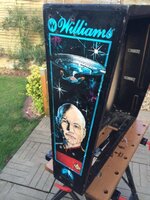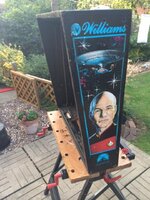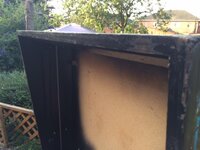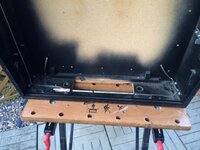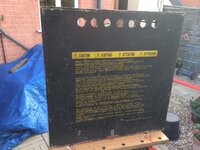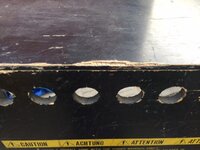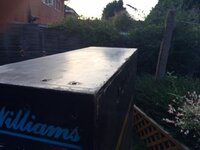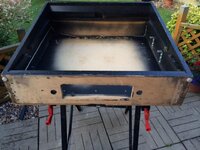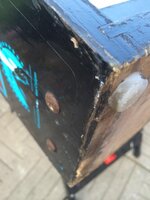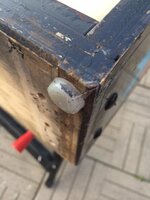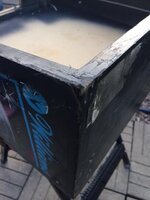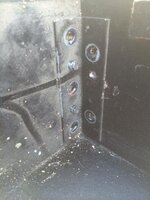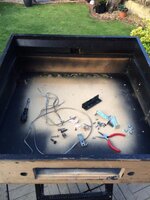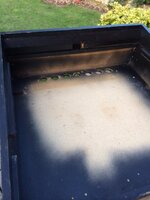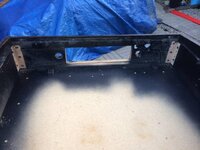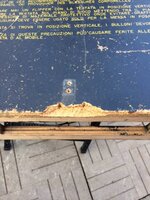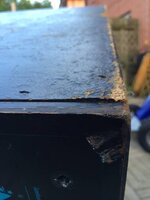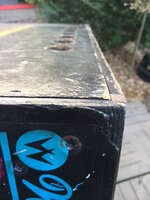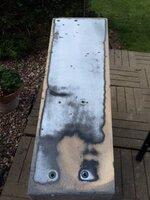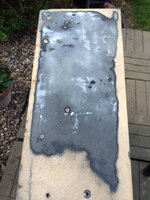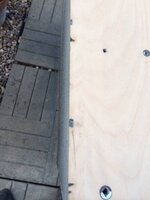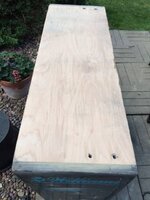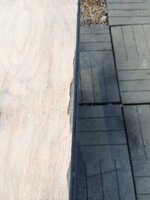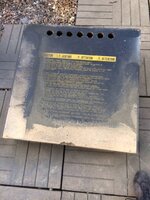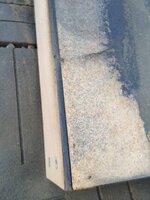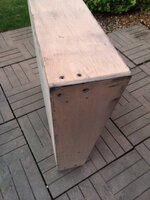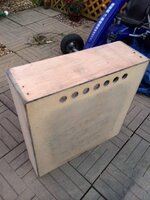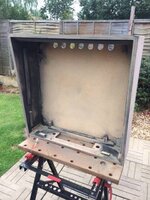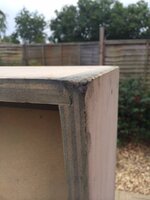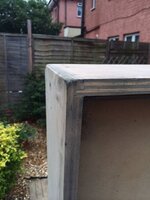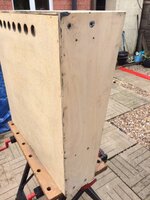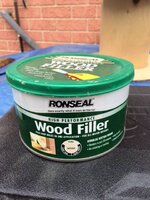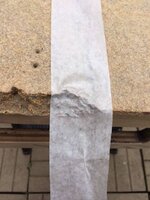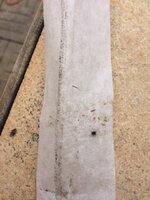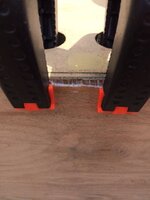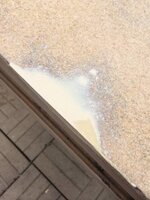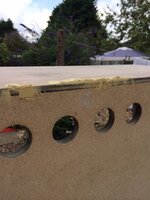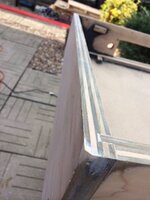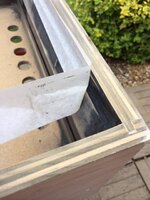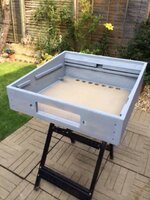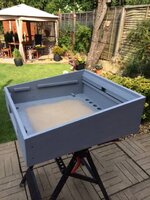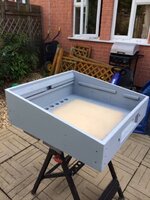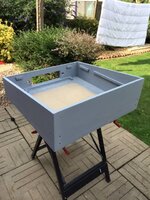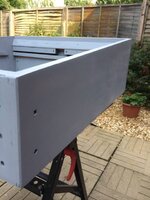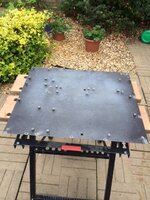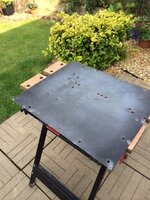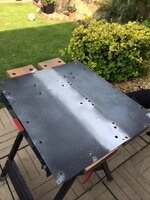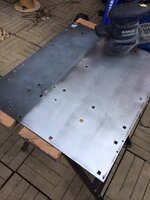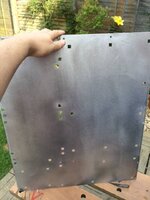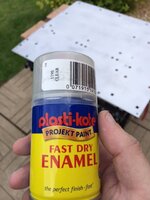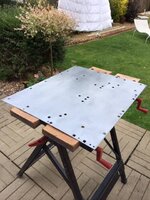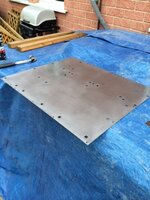There's always questions here about how to go about doing a re-decal, or what is used to fill holes in a cab etc, so figured i'd do a step-by-step guide on how I do it. There may be slight differences in how different people carry it out, materials used, however having done a couple now, learnt by trial and error along the way, and been given some cracking advice, i thought i would demonstrate over the next week or two how easy it is to do. In this case, I have a friend who has a STTNG with a backbox that has seen better days, with chunks out of the corners etc.
I was lucky enough to pick up a "spare" one from @Gaz Shiells at the Slam last year, so I shall be refurbishing the one he gave me, and then passing my original one to @Calimori (I think it was!) so he could try his hand at similar (That's if he still wants it!).
Firstly, head decals have been sourced - that is the first priority. No point in at least starting this without the replacement decals! In this case only need the head decals, since the body is (From what i remember!) in good shape.
Secondly, Tools needed.... (Will add to this if i find anything i've missed, which I'm sure I will!)
Random Orbital Sander + Assortment of pads
Detail sander + Assortment of pads
Putty knife (or similar)
Full set of screwdrivers (Posi and Flat)
Pliers (combination and Snipe nosed)
1/4" socket
Consumables needed....
50 Orbital sander disks (10 each of 40/60/80/120/240) - £8 (Ebay)
6 Detail sander pads - £2 (Ebay)
2 Simoniz 500ml Spray Grey Primer - £7.18 @ Euro Car Parts
2 Simoniz 500ml Spray Satin Matt Black - £7.18 @ Euro Car Parts
So the first debate is really about Paint. Some like to use a High-build Primer, so that any blemishes are easier to hide. Well call me old fashioned, I prefer to use standard primer, since i know where I stand with it. Personal Preference i guess.
Please remember that the cab itself has to be baby-bottom smooth before you apply the decals - ANY (and i mean ANY) blemishes that exist, even if you cant see it, will be accentuated by the decals, and WILL look awful. The entire surface needs to be hole-free, perfectly level (Hence the use of the orbital sander since this in the most part prevents large divots and gives a reasonably even surface) and smoooooooth.
So - Parts are ordered - should be here in a few days Max, and I'll start detailing the next steps...
Time taken so far - Approx 20 mins
(Will lock the thread until the work starts...)
I was lucky enough to pick up a "spare" one from @Gaz Shiells at the Slam last year, so I shall be refurbishing the one he gave me, and then passing my original one to @Calimori (I think it was!) so he could try his hand at similar (That's if he still wants it!).
Firstly, head decals have been sourced - that is the first priority. No point in at least starting this without the replacement decals! In this case only need the head decals, since the body is (From what i remember!) in good shape.
Secondly, Tools needed.... (Will add to this if i find anything i've missed, which I'm sure I will!)
Random Orbital Sander + Assortment of pads
Detail sander + Assortment of pads
Putty knife (or similar)
Full set of screwdrivers (Posi and Flat)
Pliers (combination and Snipe nosed)
1/4" socket
Consumables needed....
50 Orbital sander disks (10 each of 40/60/80/120/240) - £8 (Ebay)
6 Detail sander pads - £2 (Ebay)
2 Simoniz 500ml Spray Grey Primer - £7.18 @ Euro Car Parts
2 Simoniz 500ml Spray Satin Matt Black - £7.18 @ Euro Car Parts
So the first debate is really about Paint. Some like to use a High-build Primer, so that any blemishes are easier to hide. Well call me old fashioned, I prefer to use standard primer, since i know where I stand with it. Personal Preference i guess.
Please remember that the cab itself has to be baby-bottom smooth before you apply the decals - ANY (and i mean ANY) blemishes that exist, even if you cant see it, will be accentuated by the decals, and WILL look awful. The entire surface needs to be hole-free, perfectly level (Hence the use of the orbital sander since this in the most part prevents large divots and gives a reasonably even surface) and smoooooooth.
So - Parts are ordered - should be here in a few days Max, and I'll start detailing the next steps...
Time taken so far - Approx 20 mins
(Will lock the thread until the work starts...)
Last edited:

